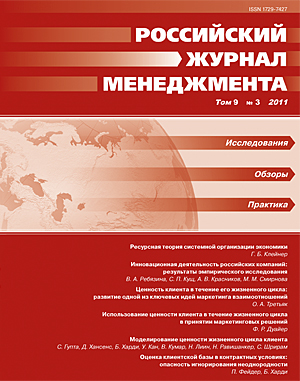Инновационная деятельность российских компаний: результаты эмпирического исследования
Аннотация
В статье представлены результаты апробации комплексного метода анализа инновационной деятельности компаний на основе методологии «Инновационный радар». При апробации был применен последовательный подход, включающий тестирование модели, разработанной в рамках методологии «Инновационный радар», на качественном этапе исследования (15 глубинных интервью) и последующее эмпирическое исследование на базе выборки 120 российских инновационно-активных компаний (165 респондентов). По результатам анализа сделаны выводы о влиянии различных аспектов инновационной деятельности российских компаний на показатели их результативности.
Ключевые слова:
инновации, типы инноваций, оценка инновационной деятельности компаний
Скачивания
Библиографические ссылки
The List of References in Cyrillic Transliterated into Latin Alphabet
Загрузки
Опубликован
Как цитировать
Выпуск
Раздел
Лицензия
Статьи журнала «Российский журнал менеджмента» находятся в открытом доступе и распространяются в соответствии с условиями Лицензионного Договора с Санкт-Петербургским государственным университетом, который бесплатно предоставляет авторам неограниченное распространение и самостоятельное архивирование.





